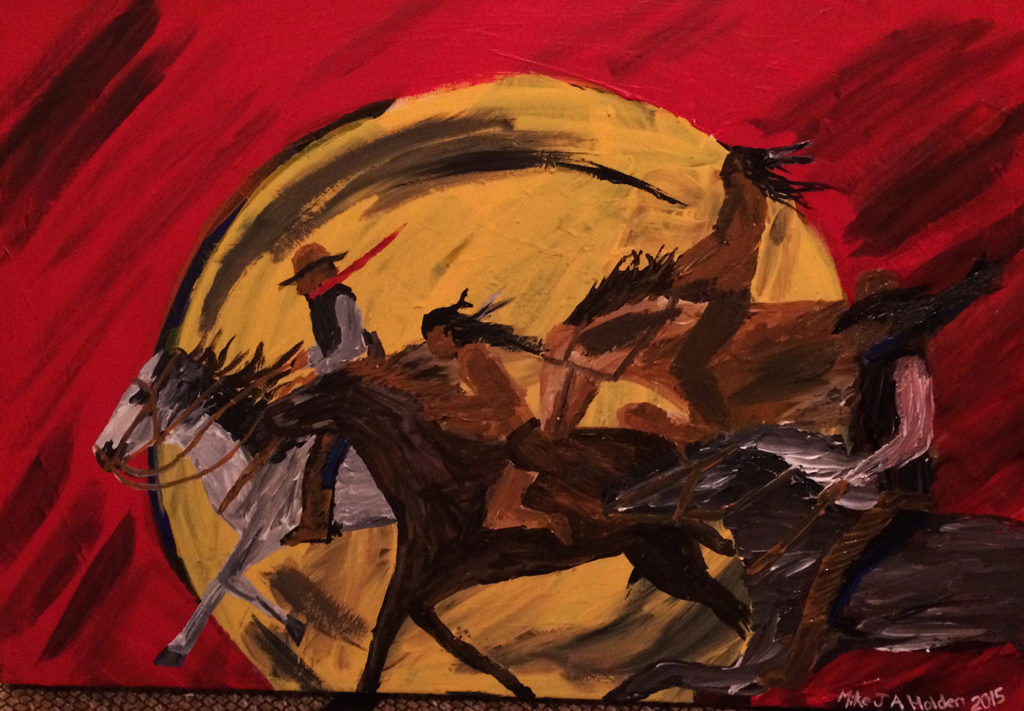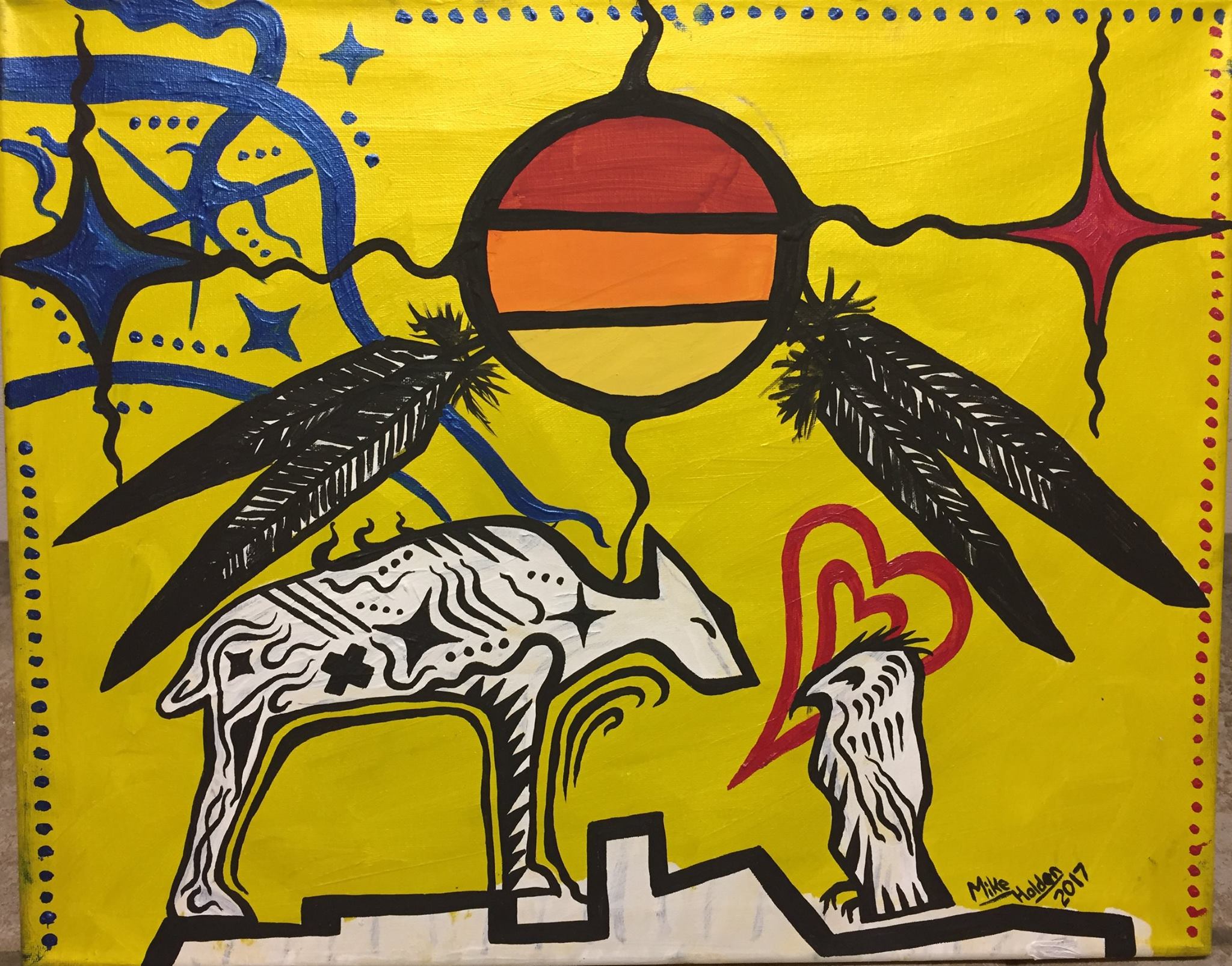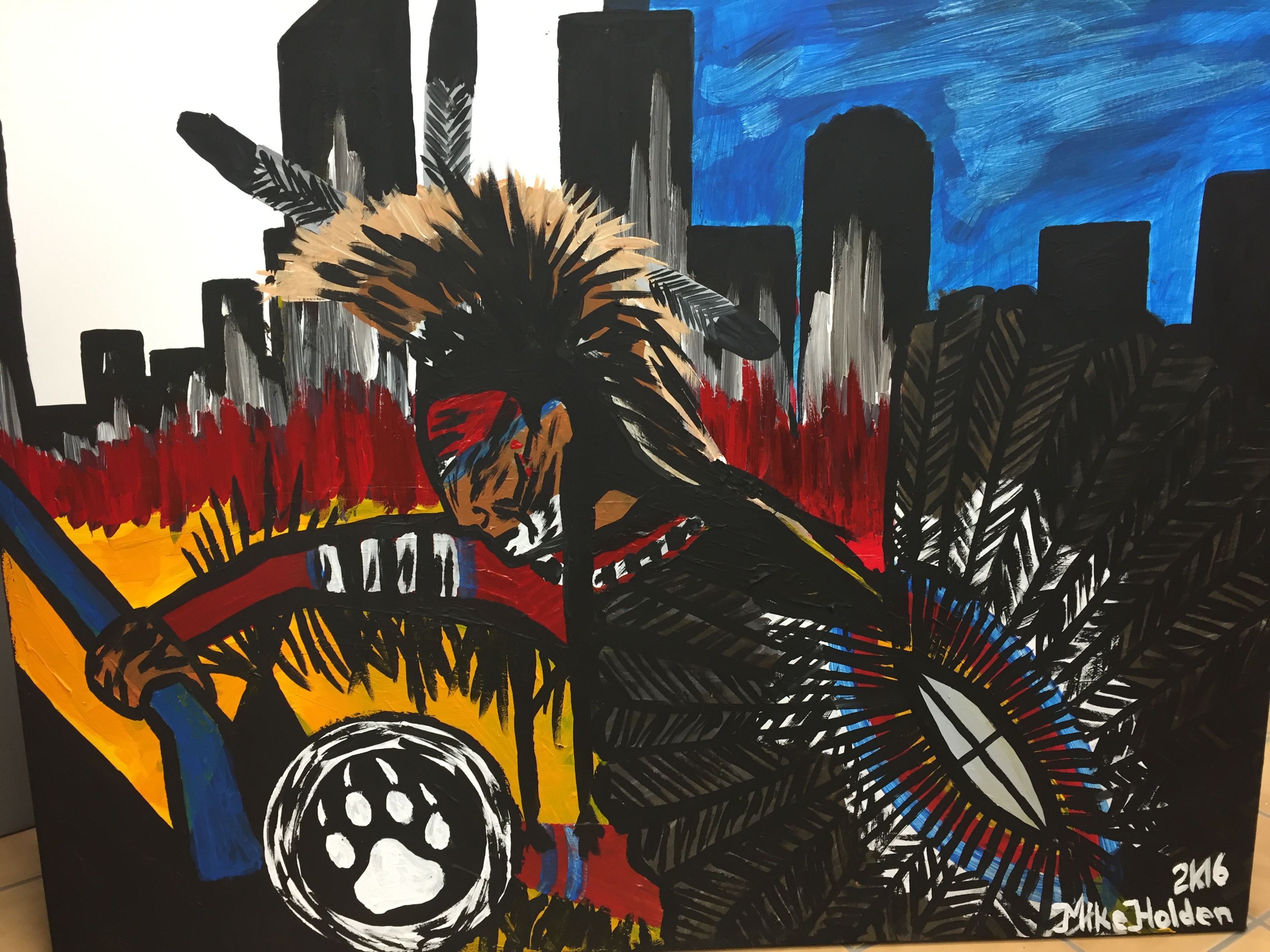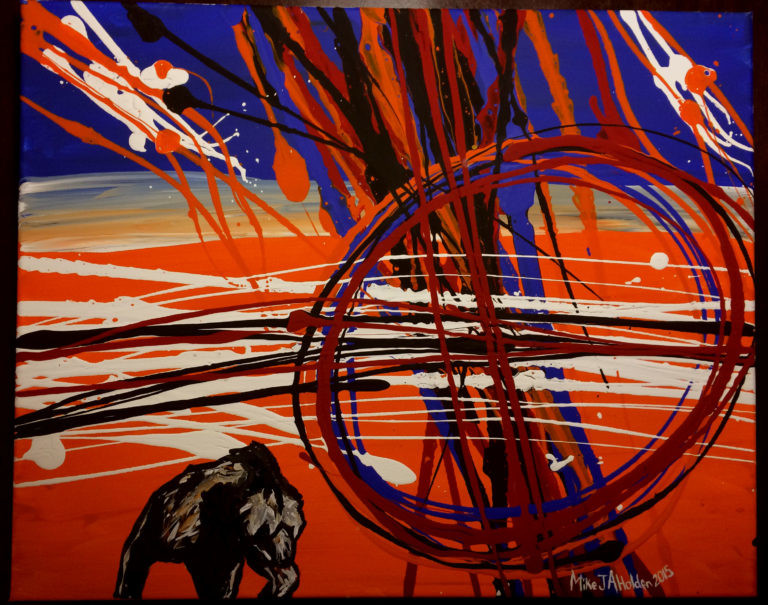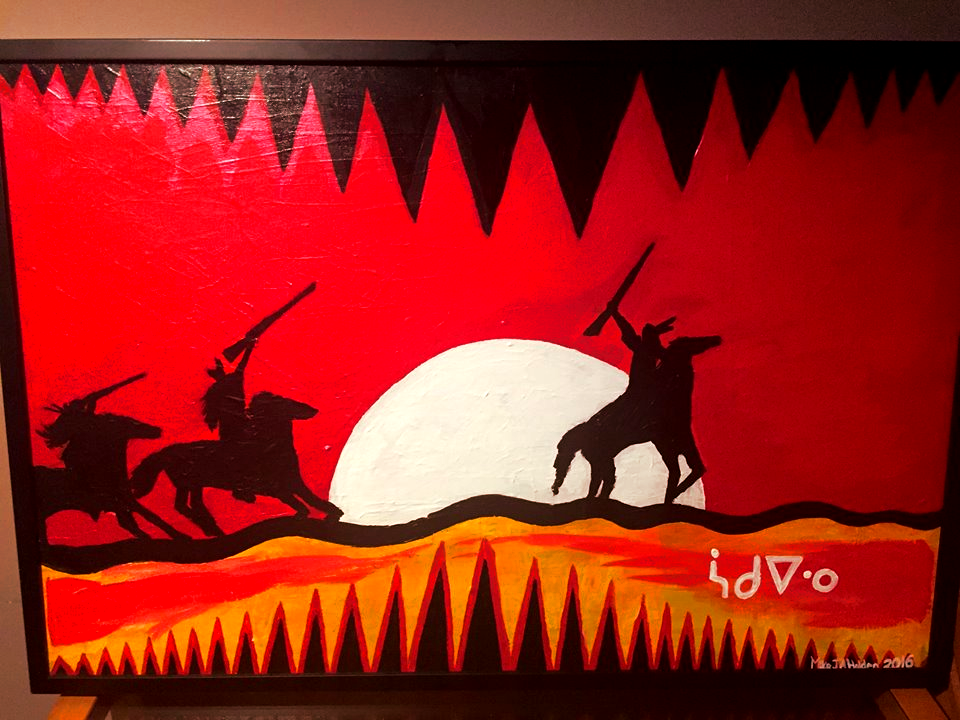The True Story of the Cowboys and Indians
Acrylic on Canvas
The story of the cowboy, like many of the icons and folklore woven into the modern day story of America, has largely been appropriated and transformed to fit a white narrative.
On the open range, and the dusty trails of the legendary cattle drives, it is estimated that one if four cowboys were African-American, with an even greater number being Mexican and indigenous. In fact, the Lone Ranger is believed to have been based on black lawman Bass Reeves, who traveled with an indigenous companion.
By nature, riding ranges left the cowboy autonomous to the racial oppression of daily contact with a boss. While Hollywood is full of tales of fights between cowboys and Indians this is also a great lie of history. Conflicts between cowboys and indigenous peoples were quite rare (clashes between raiding parties and ranchers after the 1880s when settlers crowded indigenous lands and fencing became more popular are another matter, though still greatly exaggerated). Free roaming cowboys most often made deals with the indigenous inhabitants as they crossed through their territories, negotiating tributes paid in cattle, or a common toll of 10 cents per head, though cattle were sometimes taken without negotiation.

